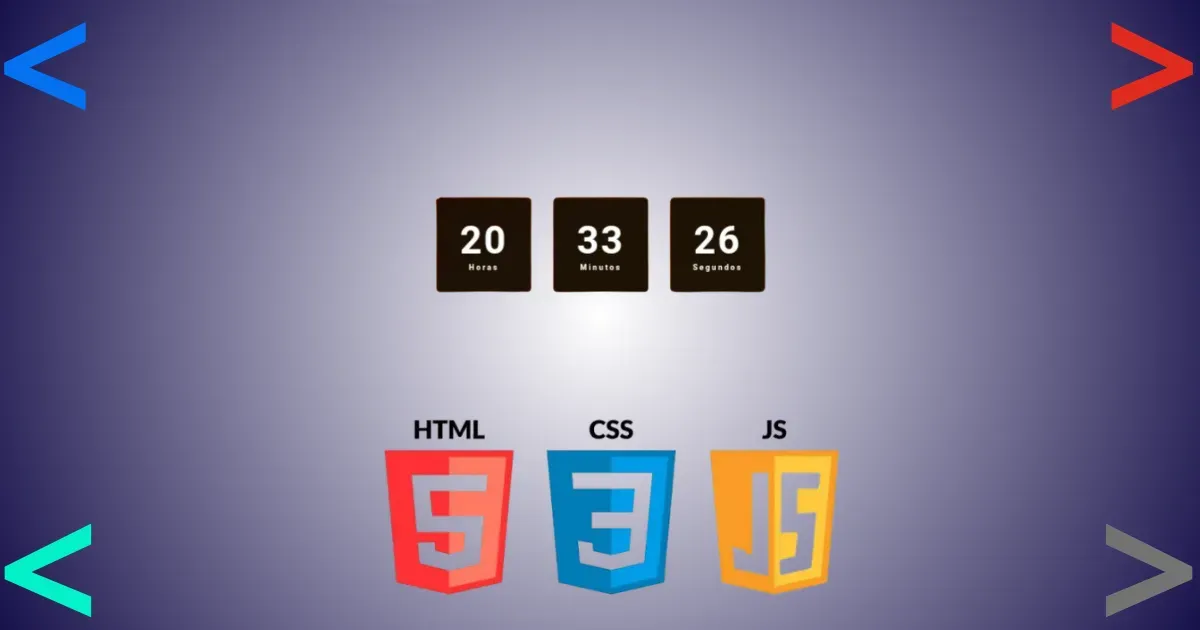Relógio Digital:
Aprenda a construir um relógio digital funcional com este tutorial passo a passo.
Este projeto é muito bom pra quem está aprendendo linguagens de programação, principalmente nestas 3 linguagens: HTML, CSS e JavaScript.
Este projeto consiste em um Relógio Digital Dinâmico e funcional.
Veja o Relogio Digital em funcionamento neste link. Relógio Digital.
Veja o vídeo no YouTube:
Começando o Tutorial:
1° Passo: Abra seu VS Code, ou qualquer IDE da sua preferência e crie três pastas com os nomes... index.html, style.css e script.js.
Logo em seguida copie o código html abaixo e cole na pasta "index.html".
<!DOCTYPE html>
<html lang="pt-br">
<head>
<meta charset="UTF-8">
<meta http-equiv="X-UA-Compatible" content="IE=edge">
<meta name="viewport" content="width=device-width, initial-scale=1.0">
<link rel="stylesheet" href="style.css">
<title>Relógio Digital Dinâmico</title>
</head>
<body>
<div class="relogio">
<div>
<span id="horas">00</span>
<span class="tempo">Horas</span>
</div>
<div>
<span id="minutos">00</span>
<span class="tempo">Minutos</span>
</div>
<div>
<span id="segundos">00</span>
<span class="tempo">Segundos</span>
</div>
</div>
<script src="script.js"></script>
</body>
</html>
2° Passo: Copie o código abaixo e cole na pasta "style.css".
@import url('https://fonts.googleapis.com/css2?family=Roboto+Stencil&display=swap');
* {
margin: 0;
padding: 0;
font-family: "Roboto Stencil", sans-serif;
}
body {
height: 100vh;
background: linear-gradient(150deg, red, yellow);
display: flex;
align-items: center;
justify-content: center;
}
.relogio {
display: flex;
align-items: center;
justify-content: space-around;
height: 250px;
width: 550px;
background: transparent;
border-radius: 3px;
box-shadow: 0px 8px 10px rgba(0, 0, 0, .5);
}
.relogio div {
height: 150px;
width: 150px;
display: flex;
flex-direction: column;
align-items: center;
justify-content: center;
color: #fff;
background: rgba(5, 5, 5, .9);
box-shadow: 5px 5px 15px rgba(0, 0, 0, .7);
border-radius: 7px;
letter-spacing: 3px;
}
.relogio span {
font-weight: bolder;
font-size: 60px;
}
.relogio span.tempo {
font-size: 12px;
}
3° Passo: Copie o código abaixo e cole na pasta "script.js".
const horas = document
.getElementById('horas');
const minutos = document
.getElementById('minutos');
const segundos = document
.getElementById('segundos');
const relogio = setInterval(
function time() {
let dateToday = new Date();
let hr = dateToday.getHours();
let min = dateToday
.getMinutes();
let s = dateToday.getSeconds();
if (hr < 10) hr = '0' + hr;
if (min < 10) min = '0' + min;
if (s < 10) s = '0' + s;
horas.textContent = hr;
minutos.textContent = min;
segundos.textContent = s;
})
Agora, com os três arquivos (index.html, style.css, e script.js) criados, você pode abrir o index.html no seu navegador e ver seu projeto funcionando perfeitamente!


Comentários
Postar um comentário
Obrigado pelo seu feedback!